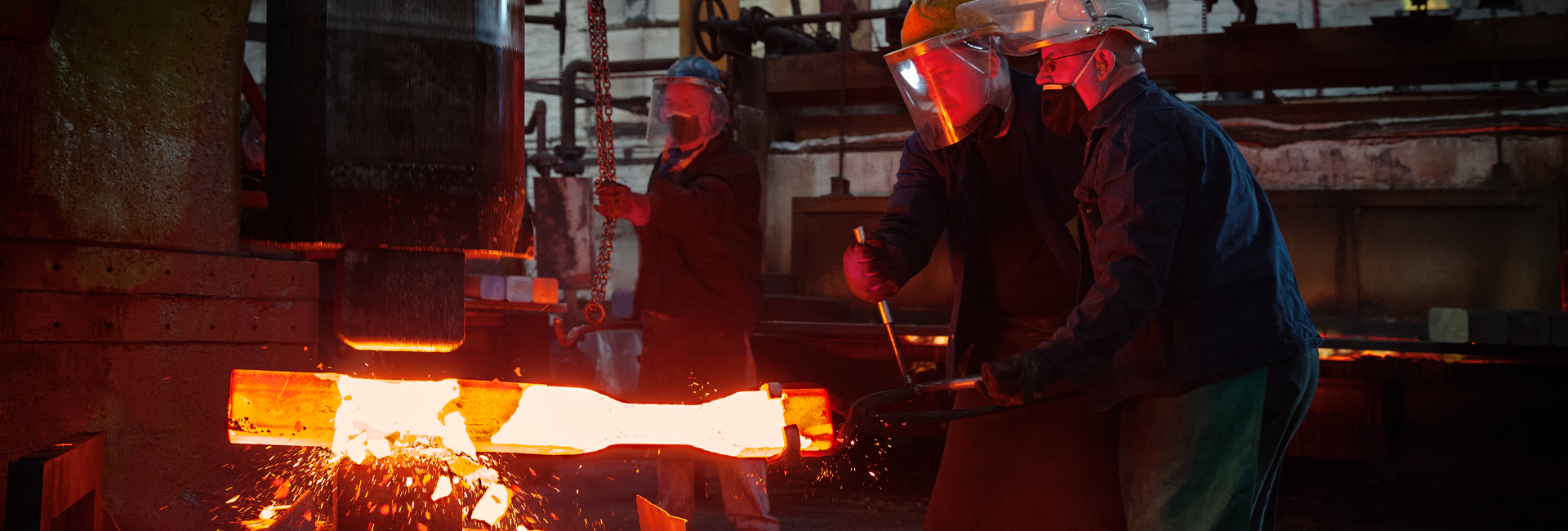All manufacturing processes are integral to the composition, strength, durability, and performance of metal parts. Some common methods include billet manufacturing, casting, and forging. Each method possesses certain characteristics that make it specific for certain applications. Understanding these differences will assist in choosing the right material for various industrial and commercial applications.
What is a Billet?
Billets are semi-manufactured pieces that are available for the forging, casting, or machining processes. Continuous casting and extrusion are some of the methods used to produce billets. All billets undergo rolling and serve as the base material for forging or machining. All billets display uniform composition and high structural integrity.
Billets have a notable application in the automotive, aerospace, and construction industries due to the mechanical properties they exhibit. Resulting from controlled processing, super strength, durability, and consistency while undergoing precise caissons makes billets ideal for precision applications.
Billet Manufacturing
It is the process where semi-finished metal parts, or billets, are produced. It is usually created via continuous casting, wherein molten metal is converted into the desired long object.
Steps in Billet Manufacturing
- Melting Boiler – Where raw metals are placed to be heated.
- Casting – Continuous casting is done with molten metal to create iron billets.
- Cooling and Cutting – The billets are diced to the needed length after cooling them.
- Further Processing – For the fabrication of the final products, billets are further utilized in rolling, extrusion, or forging.
Types Of Billets
Billets are semi-finished metal products used as raw materials in various manufacturing processes. They come in different types based on composition and manufacturing methods:
- Steel Billets – Used in construction, automotive, and machinery industries.
- Aluminium Billets – Lightweight and corrosion-resistant, ideal for aerospace and automotive applications.
- Copper Billets – Highly conductive, used in electrical wiring and plumbing.
- Brass Billets – Strong and corrosion-resistant, commonly used for fittings and decorative items.
- Continuous Cast Billets – Produced through continuous casting, ensuring uniformity and high strength.
- Extruded Billets – Formed by extrusion, providing excellent precision for machining.
Advantages of Billet Manufacturing:
- Guarantees high purity and homogeneous composition.
- Minimizes the presence of impurities and defects in the cast products.
- Enhances the mechanical properties, as compared to the cast components.
Disadvantages of Billet Manufacturing:
- The final shape of the component is not achieved and, thus, requires extra processing.
- The cost of production is higher than casting.
Also read: Difference Between Steel Bars and Steel Billets
Cast Manufacturing
Casting is an age-old production method whereby a liquid metal canister is heated until it liquefies, poured into a mould, and allowed to solidify into a shape. Impossible to replicate using other methods, casting makes everything seem easy by producing structures with difficult, complex geometries in shape efficiently and in a sophisticated manner.
Types of Casting
There are several types of casting, including sand casting, die casting, investment casting, and continuous casting. Each method has unique advantages and applications, making casting a preferred choice for manufacturing parts with intricate designs and diverse material requirements.
- Sand Casting: Perfect for fabricating bulky and large parts because it uses a sand-based mould.
- Die Casting: Used mostly for aluminium, zinc, and magnesium parts where a canister of liquid metal is forced into a mould at high pressure.
- Investment Casting: Pyrotechnologic is used for making very detailed, drastic forms out of wax.
- Continuous Casting: Creation of billets, blooms, slabs, ingots and other cast shapes for further methods of processing.
Advantages of Casting
- One of the most preferred techniques for large volume production because it is inexpensive and makes complex shapes easy to manufacture.
- Saves material as very little is wasted.
- Effortless to create intricate forms for large sections.
Disadvantages of Casting
- Lacks internal strength as it is porous.
- Not as strong as forged components.
- Parts require a lot of finishing and post processing to be usable.
Also Read: Cast Iron vs Pig Iron: Differences, Pricing & Properties
Forged Manufacturing
Forging entails the shaping of metal through the application of compressive force via hammering or pressing. It is a process that refines the material’s strength and durability. Forging can be performed at different temperatures.
- Cold Forging - Most done at room temperature, increasing the strength and surface quality of the metal.
- Hot Forging – The metal is heated above the temperature where it begins to deform and is made easier to work with.
- Warm Forging - Done at a temperature that provides the advantages of both cold and hot forging.
Advantages of Forging
- Attained parts are more durable and robust.
- Absence of internal void and change in grain structure is achieved.
- Effective for operations with higher levels of stress.
Disadvantages of Forging
- Compared to casting, it bears higher production costs.
- Only basic shapes can be made.
- Specialized equipment and manual force are a necessity.
Comparing the Distinct Features of Billet, Cast, and Forged Manufacturing
|
Feature |
Billet Manufacturing |
Cast Manufacturing |
Forged Manufacturing |
|
Strength |
High |
Moderate |
Very High |
|
Material Integrity |
Excellent |
Prone to defects |
Best grain structure |
|
Cost |
Higher |
Lower |
Highest |
|
Complexity |
Requires machining |
Best for complex shapes |
Limited shape complexity |
|
Applications |
Aerospace, Automotive |
Large parts, intricate designs |
High-stress components |
Conclusion
Evidently, each of the types of manufacturing methods has its own strengths and weaknesses and from which a decision can be made. Cast manufacturing is ideal for complex shapes and cost-effective mass production. Billet manufacturing is preferred for precision machining providing high material integrity. Forged components, of course, are best known for their ability to endure extreme conditions and harsh environments. Understanding these processes helps industries select the best method for optimal performance, longevity, and cost-efficiency.
For more information, please reach out to us at: Sales@sreemetaliks.com

